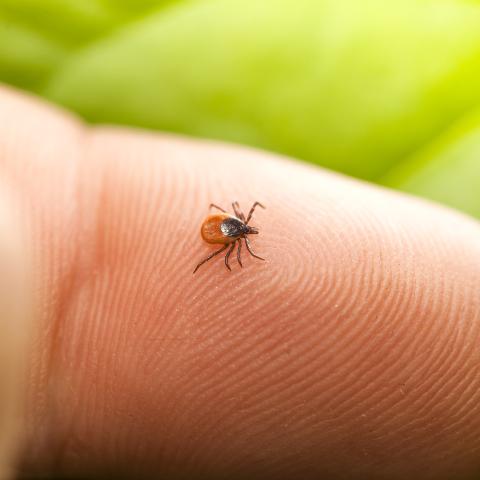Posted In Health Tips on January 15, 2024

We're in the midst of extremely cold winter weather in our area and the low temperatures can pose serious health risks if you are unprepared.
The arctic air combined with brisk winds can result in dangerously cold wind chill values. According to the U.S. National Weather Service (NWS), the real number to be aware of is not the number on the thermometer but the wind chill number (the “feels-like” temperature), which is a composite of air temperature and wind speed and can change in seconds.
In cold weather, the body increases blood flow to your core to keep vital organs warm and reduces blood flow to the extremities, so your fingers, toes, and even skin covered by a hat or gloves are the most vulnerable. Even healthy people exposed to extreme cold are susceptible to frostbite and can succumb to hypothermia in a matter of minutes.
Frostbite
Frostbite is a type of injury caused by freezing. It leads to a loss of feeling and color in the areas it affects, usually extremities such as the nose, ears, cheeks, chin, fingers and toes. Frostbite can permanently damage the body and severe cases can lead to amputation of the affected body part.
You may have a greater chance of developing frostbite if you:
- Have poor blood circulation
- Are not properly dressed for extremely cold temperatures
If you notice redness or pain in any skin area, get out of the cold or protect any exposed skin — frostbite may be beginning. Any of the following signs may point to frostbite:
- A white or grayish-yellow skin area
- Skin that feels unusually firm or waxy
- Numbness
A person who has frostbite may not know they have it until someone else points it out because the frozen parts of their body are numb. Try not to walk on any affected feet or toes and don’t rub the area as this could cause more damage. If you notice signs of frostbite on yourself or someone else, seek medical care. Without proper medical care, frostbite can contribute to complications like long-term numbness, sensitivity to cold, joint stiffness, gangrene, and hypothermia.
Hypothermia
Hypothermia occurs when the body loses heat faster than it can produce it, resulting in abnormally low body temperature. According to the Mayo Clinic, this drop in body temperature prevents your heart, nervous system, and other organs from working normally. Among the first signs of hypothermia is shivering (as your body tries to produce heat), followed by slower breathing and heart rate in the second stage, along with confusion and sleepiness.
Sweating or getting wet outdoors increases your risk of hypothermia since wet clothes can sap away your body heat. According to the Centers for Disease Control and Prevention (CDC), while hypothermia is most likely at very cold temperatures, it can occur even at cool temperatures (above 40°F) if a person becomes chilled from rain, sweat, or submersion in cold water.
Victims of hypothermia are often:
- Older adults with inadequate food, clothing, or heating
- Babies sleeping in cold bedrooms
- People who remain outdoors for long periods—the homeless, hikers, hunters, etc.
- People who drink alcohol or use illicit drugs
Warning signs of hypothermia include confusion, shivering, difficulty speaking, sleepiness, stiff muscles and fumbling hands. Hypothermia is a medical emergency and immediate medical care is necessary.
Dressing for cold weather
In general, you should wear one to three layers with an outer layer to keep out wind, snow and/or rain; long pants; waterproof shoes or boots; a warm hat; gloves or mittens; a ski mask or scarf to cover your mouth and nose and protect your lungs; and ski googles to protect your eyes.
Wear looser rather than tighter layers because it keeps a layer of air between the cloth that will stay warm and take longer to cool. In cold, wet weather, wear wool instead of cotton because wool repels moisture and helps you maintain dry, warm air in your clothing layers.
Other considerations
If you’re healthy and have your skin and airways fully covered, you should be fine outside for short periods when the wind chill is below 0 degrees Fahrenheit, but if you’re managing a disease, you may need to be extra cautious in extremely cold temperatures.
- Inhaling extremely cold air exposes moist lung tissue to the cold and can cause airways to tighten and feel constricted. If you have asthma, you’re at risk of immediately feeling short of breath, wheezing and coughing which may cause an asthma attack.
- Because of the body’s changes in blood circulation in the cold, blood sugar levels in persons with diabetes can be erratic. If you’re feeling dizzy or weak after being outside in the cold, check your blood sugar. If you have diabetic neuropathy or nerve damage, be aware that you may not be able to feel when your feet are getting too cold outside, and you can then be at higher risk for frostbite.
- Cold temperatures can add strain to your cardiovascular system, making your heart work harder, which can put you at greater risk of a heart attack. If you’re managing heart disease, be careful about doing strenuous activity outside in the cold that may stress your heart, such as shoveling snow.
To avoid the pitfalls of winter weather, take precautions by dressing in appropriate layers, taking indoor breaks from outside activity, remembering to take it slow on icy roads and sidewalks, not driving through flooded roads, and keeping an emergency kit in your vehicle in case of unplanned emergency exposure to the elements.





